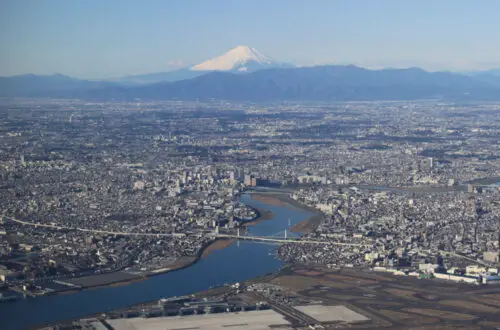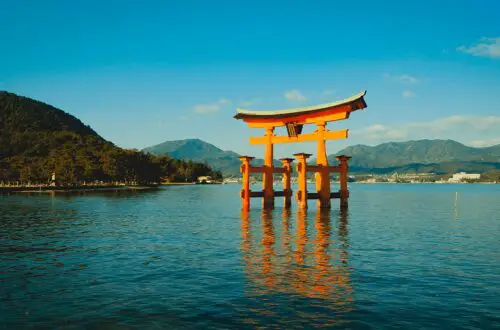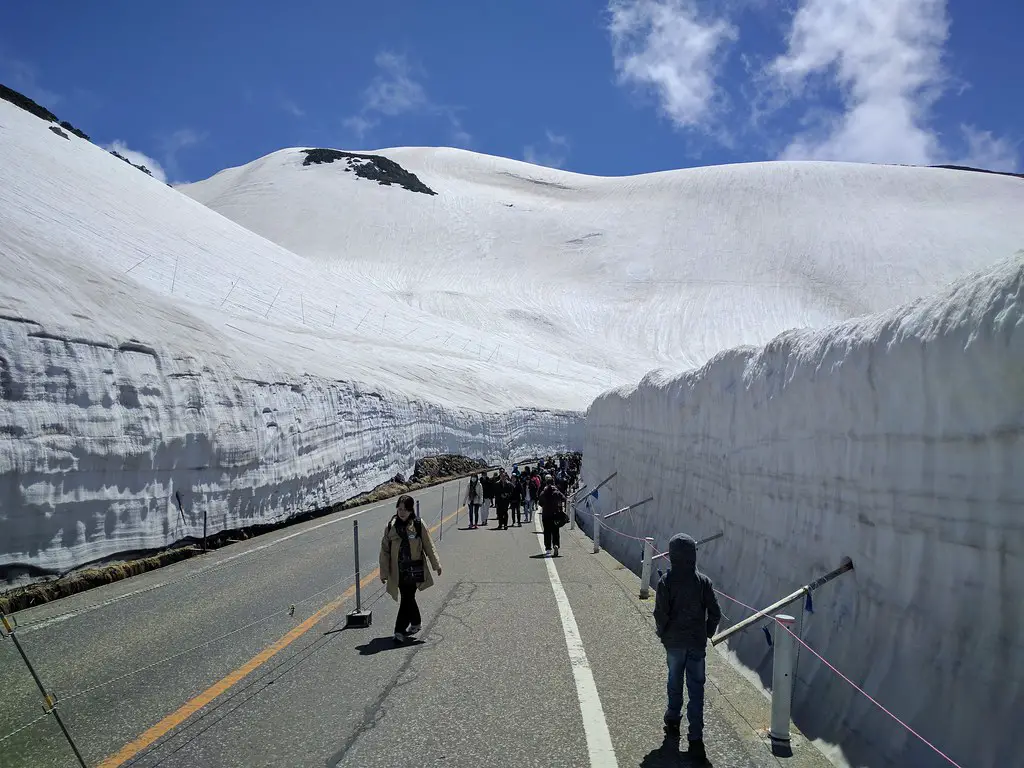
Best Time to Visit Alpine Route in Japan
The Alpine Route, or the ‘roof of Japan’ is one of the most scenic destinations in Japan. The route consists of a snow corridor set between the road to Toyama and Nagano. Pedestrians can access a section of the corridor around Murodo, a volcanic plateau near Tateyama and a highlight of the Alpine Route.
The best time to spot the ice walls in Alpine Route is from mid-April to early June. If you love sightseeing, hiking, walking, and climbing, try going between July and August. But to soak into nature’s glory, September to October is the best time when autumn displays all of its stunning bright colors.
The best time to visit the Alpine Route depends on what kind of scene amazes you. Different seasons paint it with different colors during the period between mid-April and late November. The place magically transforms throughout this duration. I’ve explained how the route looks in various months so you know for sure what suits your interest.
Best Time To Visit Alpine Route
The Alpine Route is a versatile beauty. It remains open from:
- April 15 to November 30 → Full Route from Dentetsu Toyama to Shinano Omachi
- April 10 to 14 → Partial Route from Dentetsu Toyama to Midagahara
The dates may vary slightly from year to year, depending on the weather and other conditions.
The stations in the full route are:
- Dentetsu Toyama
- Tateyama Station
- Bijodaira
- Midagahara
- Tengudaira
- Murodo
- Daikanbo
- Kurobedaira
- Kurobeko
- Kurobe Dam
- Ogizawa
- Shinano-Omachi
You can view the map of the stations here.
To get a better perspective of the “Dentetsu Toyama – Shinano Omachi” route, check out this video:
April – June (Spring): Mesmerizing View Of Snow
During this season, the Alpine Route literally furrows through the snow, creating a corridor with snow walls around 20 meters high. The wonderful views mesmerize visitors from all across the world. The sunny blue sky further highlights the snow-capped mountain peaking through the white curtains.
April and May are the perfect time to enjoy the snow walls on their peak. Throughout May, the walls begin to melt slowly, and by the end of June, the walls are barely standing at 12 meters high. So, if you want to see high snow walls standing with all their glory, the beginning of May is the ideal time to plan a trip.

Tourists are yet to visit the route in bulk during these months, so you can relax and enjoy the views as no one will block your vision while posing for photographs.
In June, the weather starts to become warmer, which is more comforting and predictable than winter. Driving through the route is a breeze this time, and offers a more relaxed sightseeing experience.
If you are lucky, you may spot ermines and Japanese Ptarmigans, roaming on snowfields of Murodo. This could be a great experience for wildlife lovers.
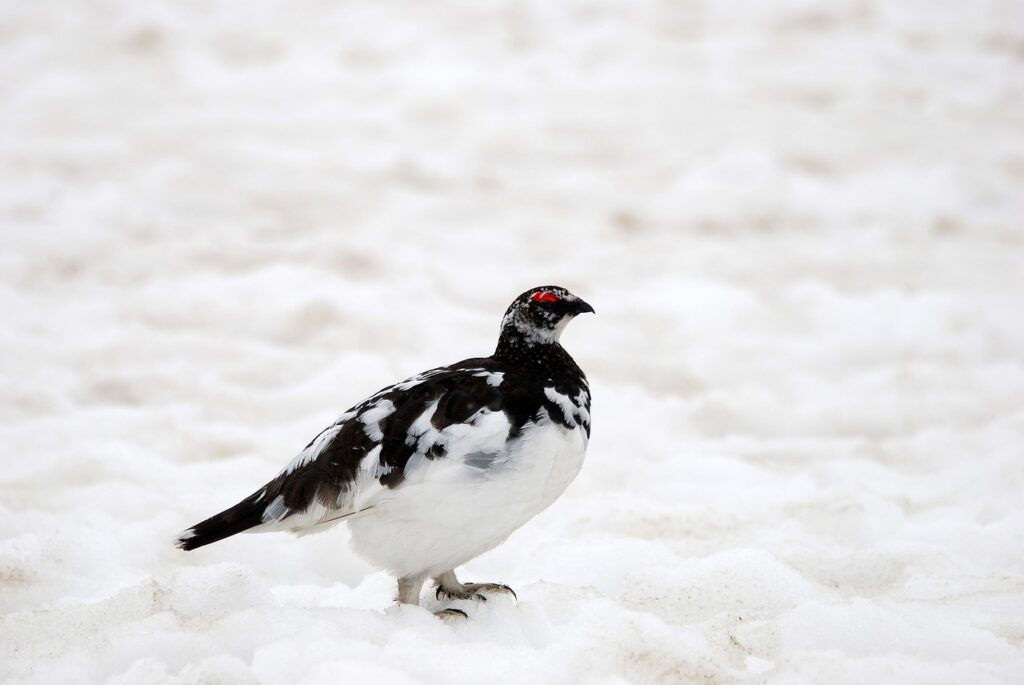
The birds also have religious significance in Japanese culture, and they are known as the messengers from God. It’s said they bring happiness to people who spot them.
You can only find them in this area from late May to June. Before you go and spend a day walking the terrain, look for the spots around the pond Mikurigaike, where the birds are known to congregate.
Map of Mikurigaike pond:
Pros
- The snow walls remain in their best form
- Cozy temperature and stable weather
- No surprise blizzards or storms
- Sightings of ermines and Japanese Ptarmigans
Cons
- The walls melt to half of their height during June
July – August (Summer): Take Long Walks Through The Scenic Routes
Summer is for people who want to take long walks through the scenic routes of Alpine, climb a few peaks, and spend their time sightseeing. The perks of visiting in summer are just too many.
This is when broad-leaf trees begin to bloom. They are yet to take the fiery shade of orange, but they cover the horizon in lush greenery.
The Kurobe Dam is released and is filled with water melted from the ice wall. Even the mere way the water gets released is a sight to behold.

If you are a fan of hiking in nature, you can go to Murodo. There are various hiking courses offered by the locals, and you can see the Tateyama mountain range from this distance.
The route that takes you to Mikurigaike pond is an hour of walk through a gorgeous road. You get the complete view of the Tateyama range reflected in the water of the damn. If you love taking snaps, this is a picturesque opportunity that you don’t want to miss.
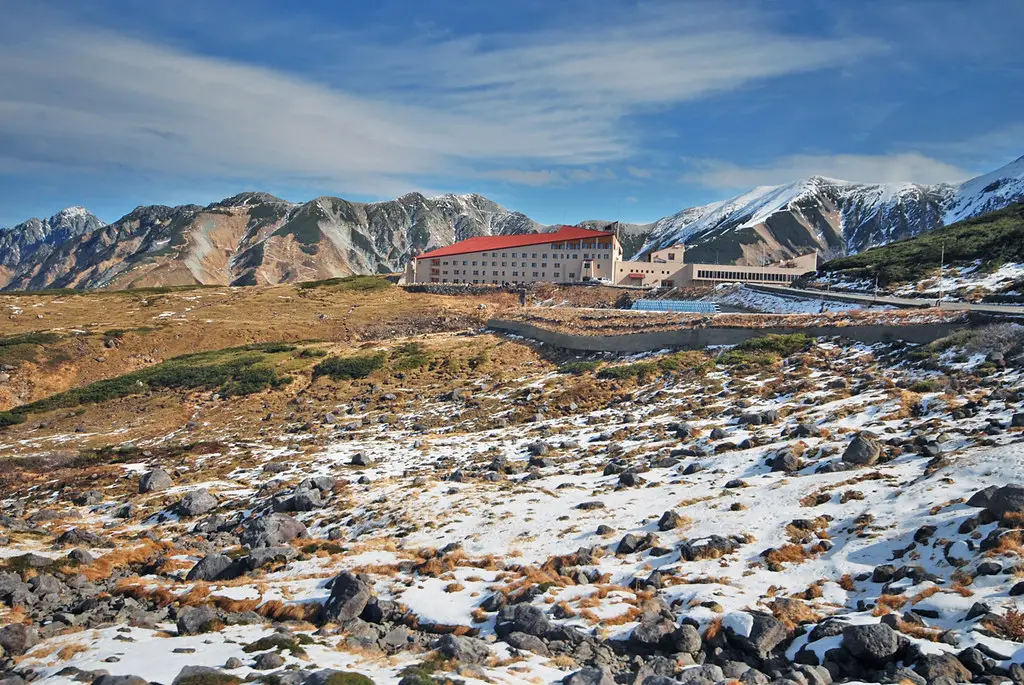
You can still walk on the snow during July. The temperature of the Murodo can get quite lower as compared to the plains below, hovering around 12 to 15 degrees, since a lot of snow remains even in July.
If you are planning for trekking through the hiking trails, get the proper gear for walking and hiking. Plus, traveling in August does not require winter equipment because most of the snow melts completely by that time.
Pros
- The broad-leaf plants begin to bloom
- Pleasant weather
- The Kurobe Dam is filled with pristine water
- Best times for hiking the trails and sightseeing
Cons
- The snow walls are almost melted by this time
September – October (Autumn): Colorful and Serene
If you are planning to come here in autumn, you might not even recognize the spot. The Alpine Route looks completely different without its famous landmark—the ice walls.
At higher altitudes, the leaves begin changing their color during October and at lower altitudes, these changes occur in early November. The leaves turn into orange, red, and all shades of fire, which is a rare sight in such high up in the mountains.
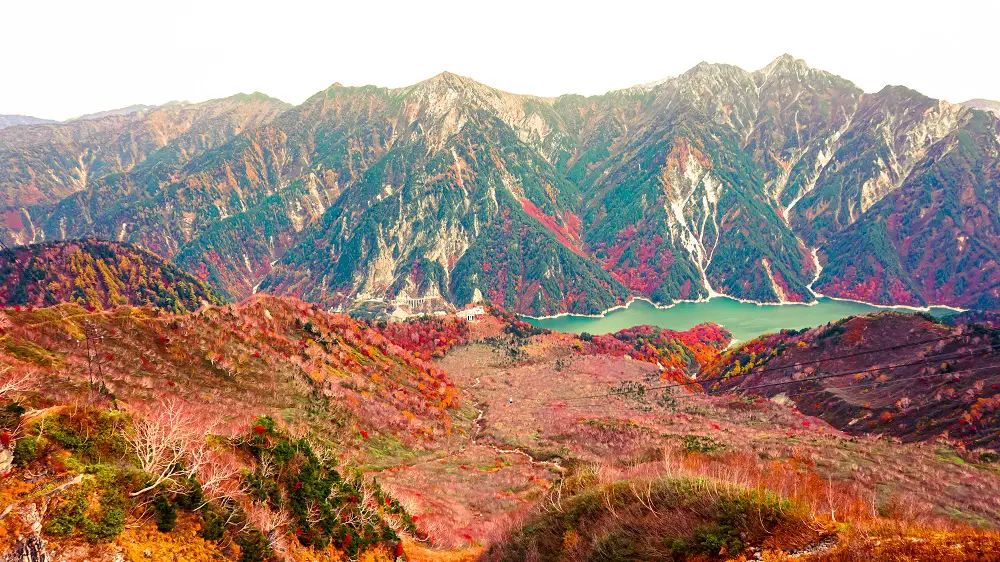
However, you can see all three colors of Alps from the top of any peak. The foot of the mountain remains green, the middle is orange and red, and the top of the peaks are covered in milky white snow.
Pros
- Spectacular fall foliage
- The mountain looks the most scenic during this time.
Cons
- No ice except for at the peak of the mountains
November (Late Autumn): Experience The Snowy World
You can get to Murodo in November, which is the highest station in Mt. Tateyama. The autumn continues displaying its bright colors until the beginning of November. But snow starts forming throughout this month and continues piling up until spring.
Snowfall sometimes comes early in late September, but it does not set on until the beginning of November. Snow begins to cover the mountain and layers after layers completely cover Murodo within a month. This is when you can take spectacular photos with the ice walls.
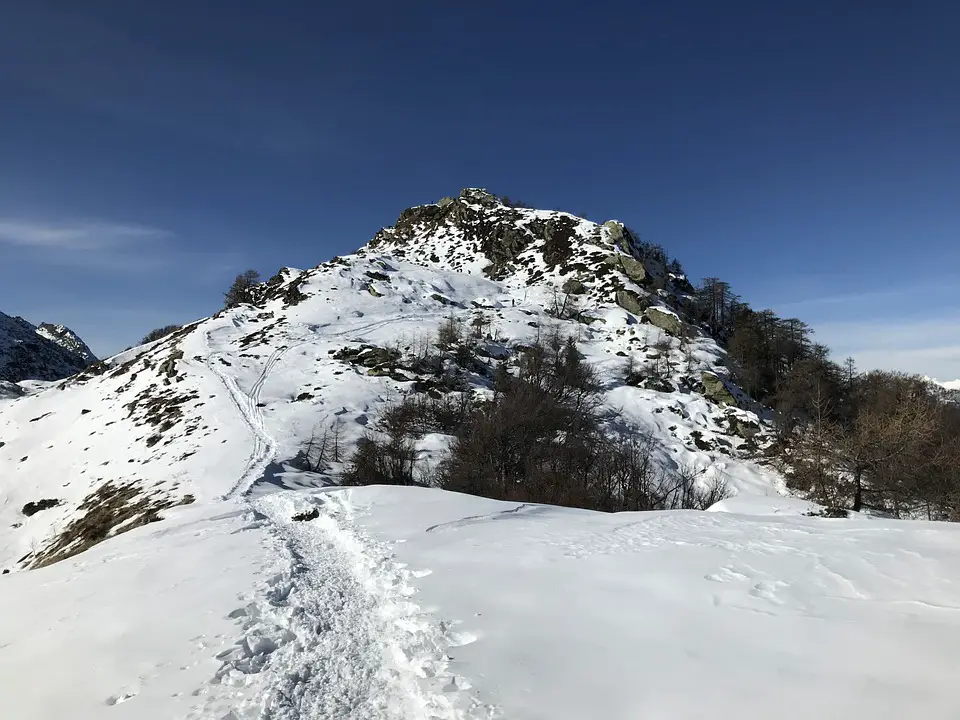
Just before the winter shutdown, you will get to see a snow-covered Alpine Route. The weather could be bad, with snowfall and high winds, during this month, causing the suspension or rescheduling of the regular bus service.
Despite the biting temperature, a great number of tourists visit the route this time to watch the new snowfall. Although most hiking trails remain closed due to excessive snow.
The snowfall also covers the Kurobe dam and it becomes completely frozen sometimes. To the disappointment of some visitors, the wildlife vanishes this time.
Pros
- A great view of Murodo
- Exciting new snowfall
- Last chance to visit the route before the winter lockdown
Cons
- Filled with a chock full of tourists
- Cold, biting weather
- Most hiking paths are close
- The Kurobe Dam is nearly out of sight
- No sign of wildlife
Weather and Atmosphere
If you are planning to visit the route, you should know how the weather behaves there. It is very unpredictable during the winter. Every minute or hour can bring in a change, and the winds can turn to rain or storm. This is not out of character for any mountain at this altitude. You should wear good walking shoes and proper winter cloth during this time.
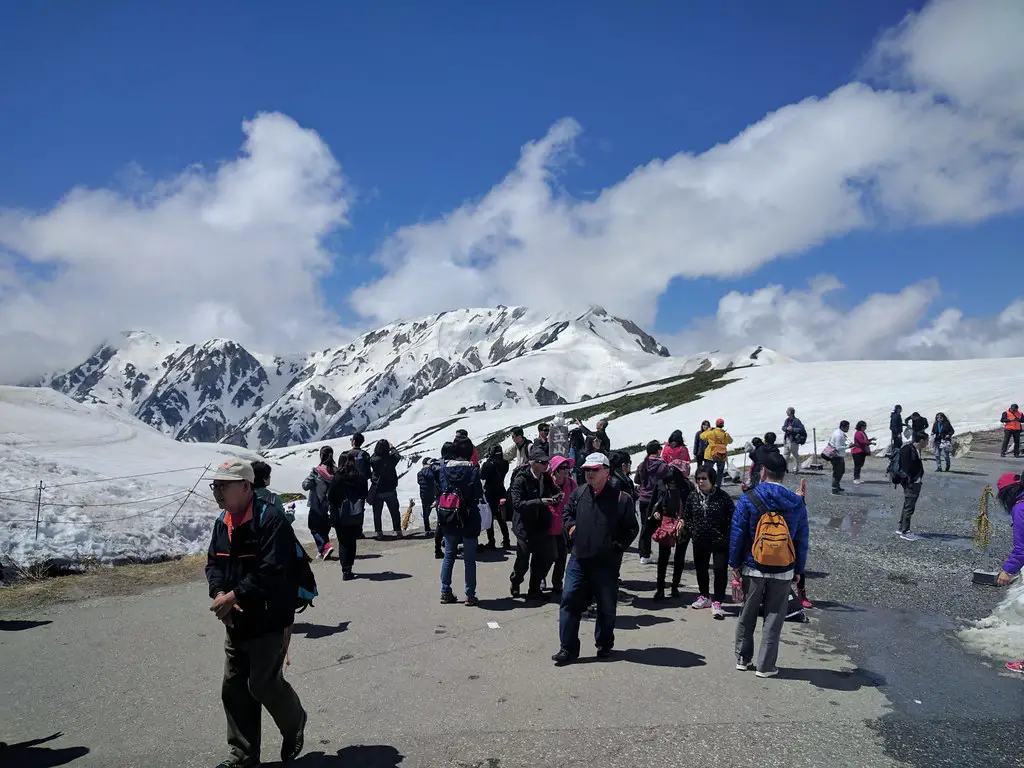
The early spring weather can have chilly and windy days and you should wear an extra sweater or jacket. Mild weather makes it pleasant to make a trip from June through September. Just one layer of clothing is enough for this period.
Crossing the Alpine Route: From Shinano-Omachi to Toyama
A one-way journey from Shinano-Omachi to Toyama may take 7 to 10 hours.
Follow this transport plan if you want to cover the full route within a day:
- Take a bus from Shinano-Omachi to Ogizawa (you need to purchase the bus ticket separately as the Alpine Route ticket does not cover it)
- Ride a trolleybus to go from Ogizawa to Kurobe dam (spend an hour or two there to see the dam, a museum, and a few more attractions)
- Ride and cable car from the dam to Kurobedaira and then go to Daikanbo by using the ropeway
- A trolleybus is available there to take you to Murodo (another scenic place that deserves a few hours of your time)
- A bus will take you from Murodo to Bijodaira and then a short cablecar journey will take you to Tateyama
- From Tateyama to reach Toyama (the end of the route), you need to take a one-hour train journey
Disclaimer: Considering the current COVID-19 situation, pedestrians are not allowed to walk along with the snow corridor. The snow can only be seen from buses. The route will stay open from April 15 to November 30, 2020.


